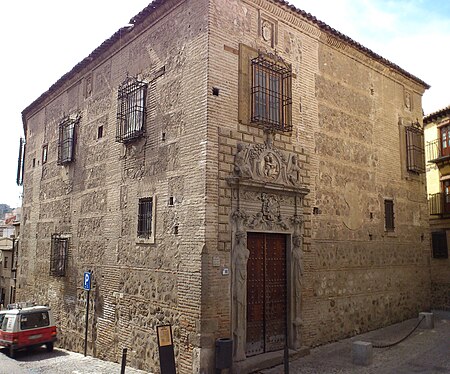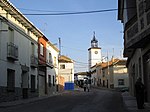Colegio de Nuestra Señora de los Infantes, Toledo
1552 establishments in SpainBien de Interés Cultural landmarks in the City of ToledoBuildings and structures completed in 1559Buildings and structures in Toledo, SpainMusic schools in Spain ... and 1 more
Schools in Toledo

The Colegio de Nuestra Señora de los Infantes (College of Our Lady of the Infants) is a school in the city of Toledo (Castile-La Mancha, Spain). It was founded in the 16th century by Juan Martínez Silíceo, Archbishop of Toledo and later a cardinal, and was intended to provide a specialist musical education for the cathedral's young singers. The original building is protected by the heritage listing Bien de Interes Cultural, but the school relocated in the 1980s.
Excerpt from the Wikipedia article Colegio de Nuestra Señora de los Infantes, Toledo (License: CC BY-SA 3.0, Authors, Images).Colegio de Nuestra Señora de los Infantes, Toledo
Bajada del Colegio de Infantes, Toledo
Geographical coordinates (GPS) Address External links Nearby Places Show on map
Geographical coordinates (GPS)
| Latitude | Longitude |
|---|---|
| N 39.8558 ° | E -4.0226 ° |
Address
Colegio de Infantes
Bajada del Colegio de Infantes
45002 Toledo
Castile-La Mancha, Spain
Open on Google Maps










